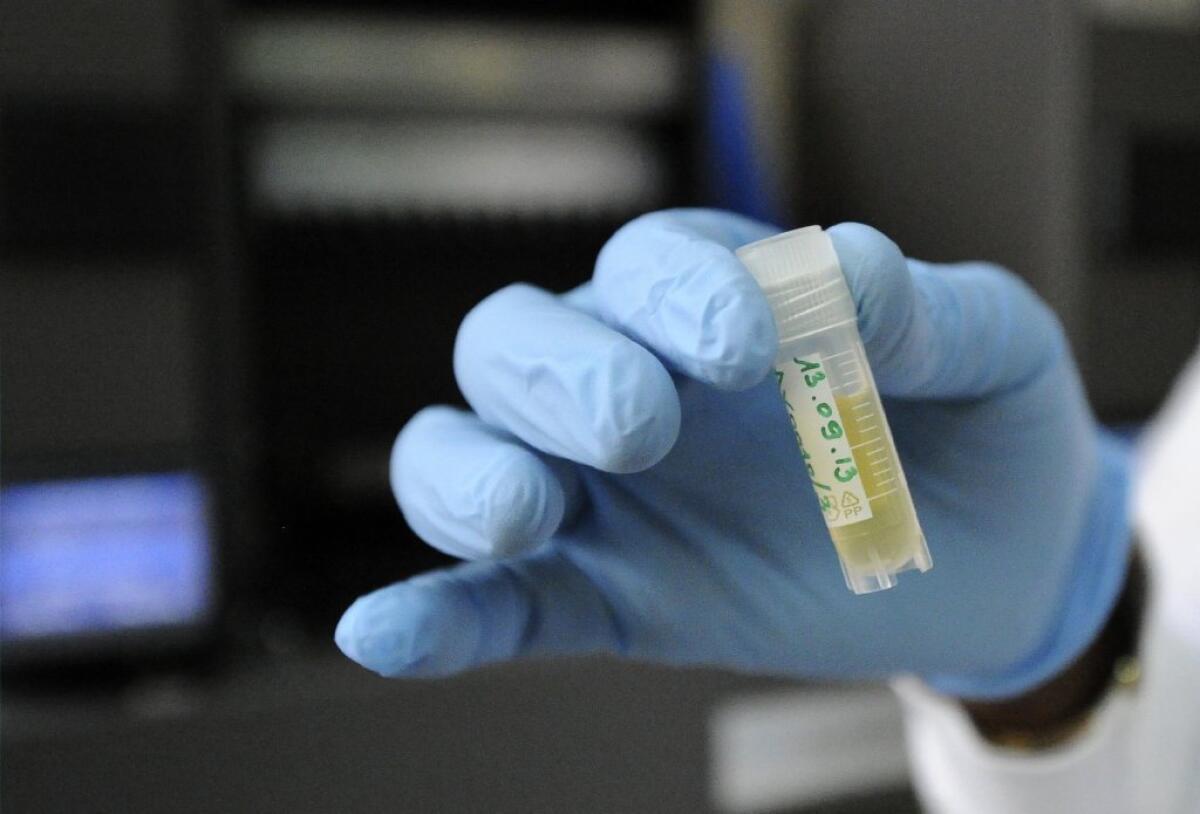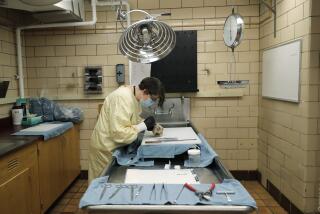HIV cure dealt a setback

The search-and-destroy mission against the HIV virus just got much more complicated.
New research suggests that HIV’s genetic program is far more abundant in certain dormant T-cells of infected patients and is potentially more capable of unleashing its deadly instructions than previously thought.
The reservoir of human immune cells hosting that code, or provirus, could be 50 times greater than previously thought, according to the study, published Thursday in the journal Cell. And a bigger proportion of those proviruses appears to be fully functional, awaiting the throw of a switch.
“It’s a little bit scary,” acknowledged microbiologist Janet D. Siliciano of Johns Hopkins University School of Medicine, one of the lead authors of the paper. “We’ve known about the latent reservoir for many years now. What we didn’t realize until this study is it might be larger than previously estimated.”
The discovery, by a team that also included the Howard Hughes Medical Institute, Harvard University and the medical schools of Yale and Louisiana State universities, recalibrates the magnitude of the quest to conquer, and not just control, HIV.
Dr. Warner C. Greene, an AIDS researcher and director of virology and immunology research at the Gladstone Institutes in San Francisco, who was not involved in the study, called the results “a rather sobering new perspective for HIV cure research.”
Multidrug therapies have been able to thwart the HIV virus in its quest to enter T-cells, and patients following the regime can live a long time, essentially virus-free. There also have been promising advances, including a Mississippi infant who recently was found to be functionally cured of the HIV virus after treatment with antiretroviral drugs.For adults on the multidrug therapy, however, “virus free” has long been something of a misnomer. Researchers have known that the virus’ genome manages to copy and insert itself into the genome of the host cell’s nucleus. As long as these cells, known as CD4+ memory T Cells, are inactive, these viral genes remain “transcriptionally silent,” or turned off. In the short run, that is good news for the human host. But in the long run, it’s a big bonus for the virus.
“It’s the perfect mechanism for virus persistence because it allows for the virus’ genetic information to persist, unaffected by the host immune response and unaffected by the antiretroviral drugs,” Siliciano said. “The immune system doesn’t see that cell, and the drugs don’t affect it because it’s not making virus.”
Researchers had assumed that genetic silence was a sign of defect. But the study revealed that about 12% of these provirus sequences were intact and could be used to synthesize the virus in the lab, where it replicated just like the native stock.
That result essentially multiplies the target of researchers, who have turned to a “shock and kill” strategy to eradicate the last vestiges of the virus. The strategy is something like lighting a fire to kill a wildfire. Activating the T-cells lights the match that kindles the fire of virus production. But the antiretroviral drugs fight those flames, keeping the virus from invading a new host. The old host, meanwhile, essentially burns out. Gone with it is the provirus genome.
The research team has been very successful in waking up the T cells but found that not all of them produced viruses. Repeated attempts kicked more of the laggard genes into gear, but the hit-and-miss nature of the process baffled researchers.
Researchers still must figure out the fickle behavior of the proviruses and try to find ways to activate them without doing harm to patients, for whom an overactive T-cell system can be deadly. And they are faced with far more targets than expected.
“I don’t think it’s discouraging,” Saliciano said. “Our approach has always been to try to understand the latent reservoir. Everything that we’re doing just gives us more information about the reservoir, and about the mechanisms of latency. I think the more we learn about what works and doesn’t work helps us go forward.”







